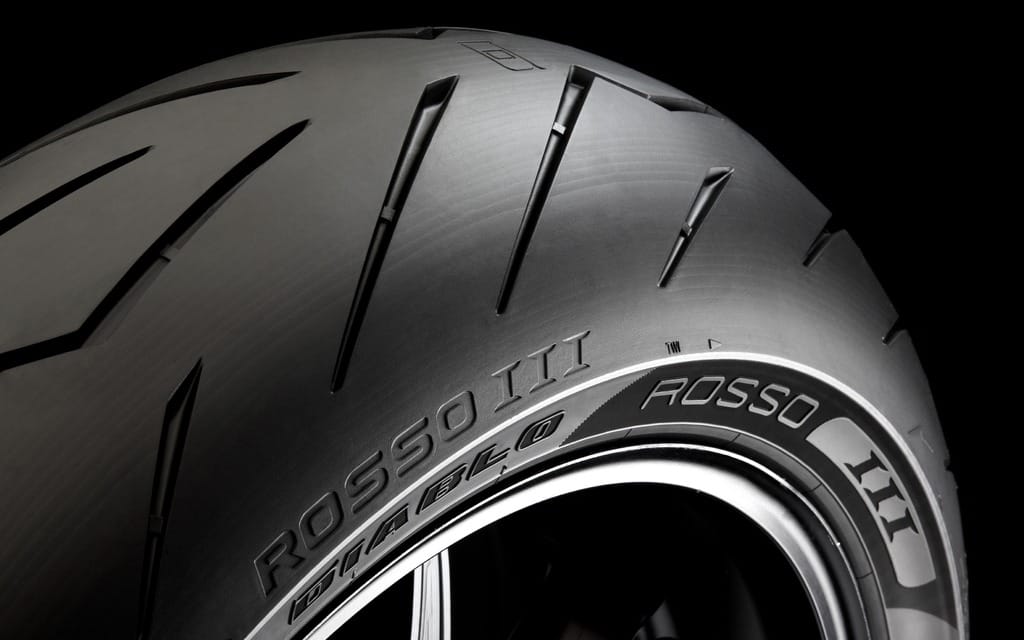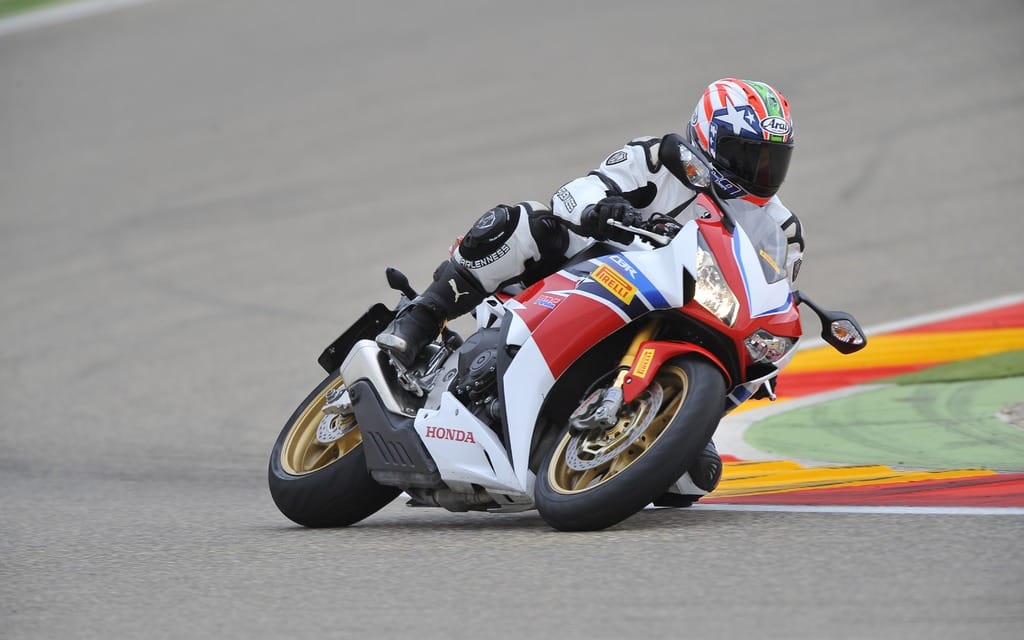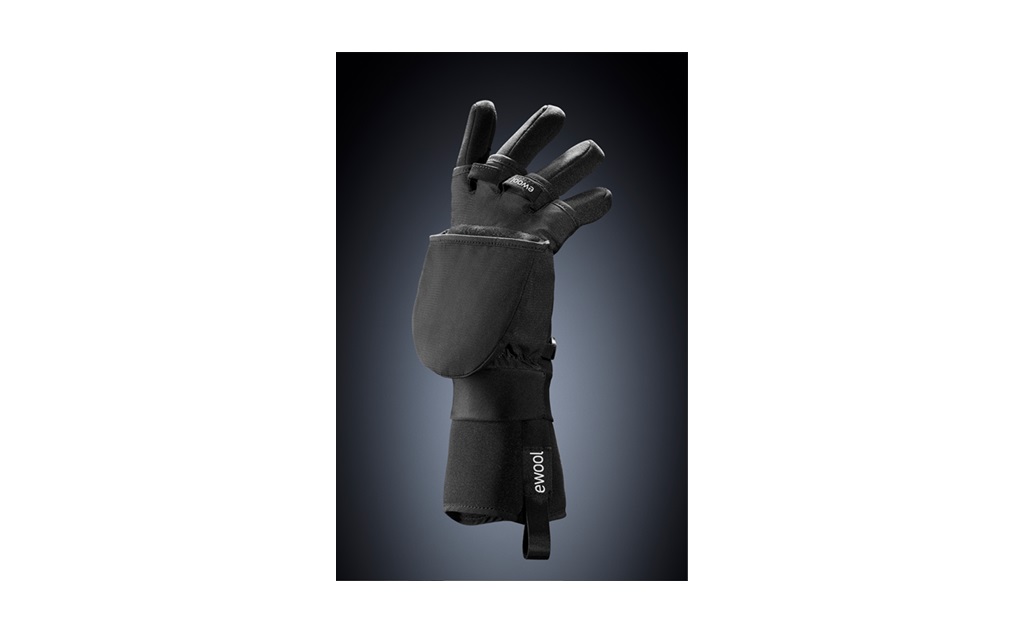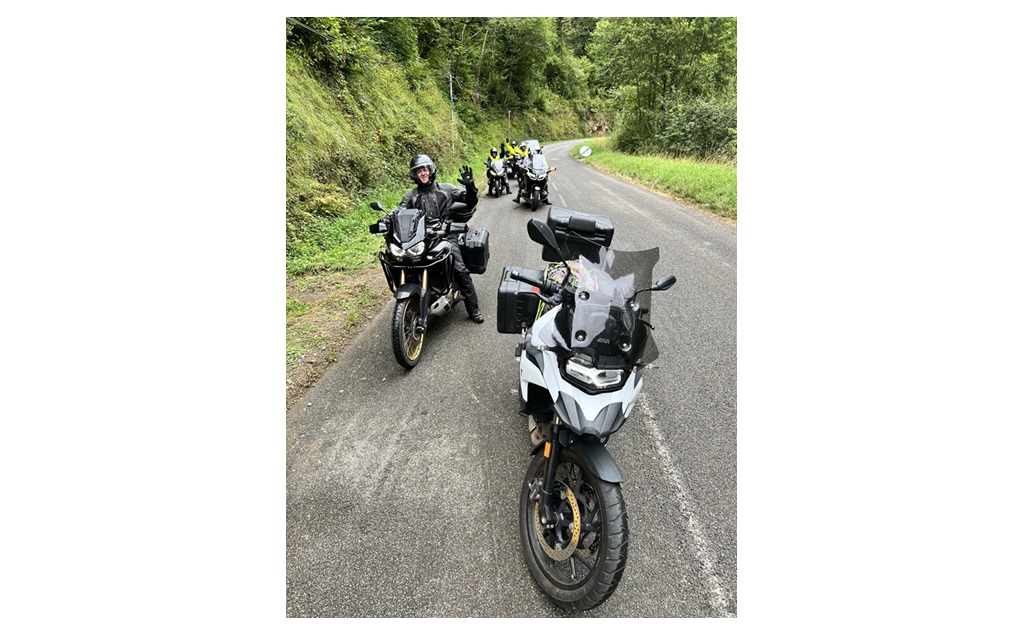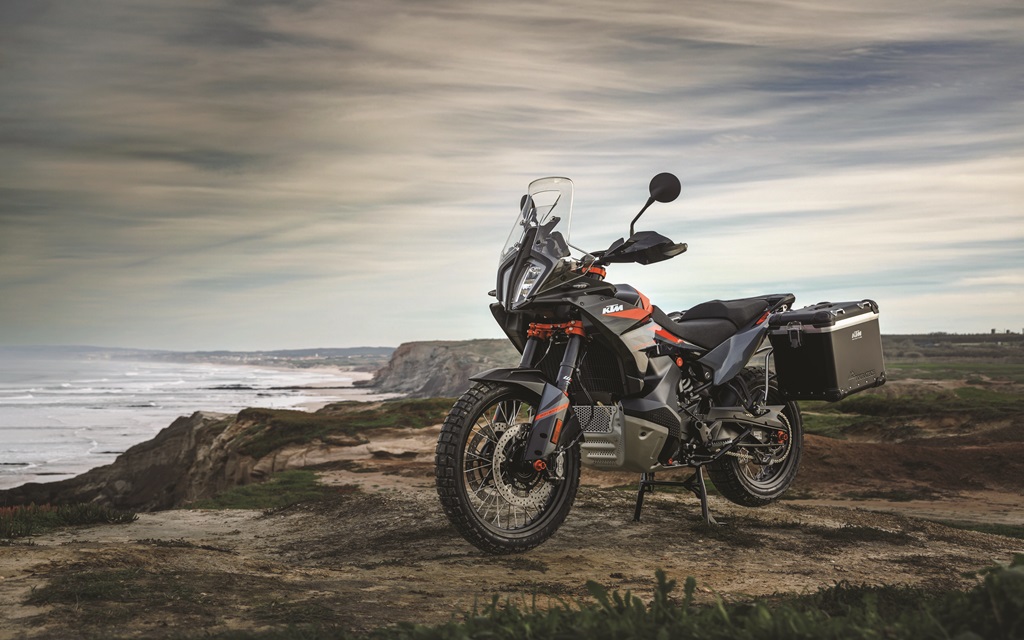It’s one for the front and two for the rear as Pirelli splits the difference
Seventy journalists from around the world are invited to Spain, for one day, to test Pirelli’s new sport tire. We are about three hours away from the nearest international airport in Aragón, which is the country’s fourth largest region spanning the northeast Pyrenees mountain range. Half of the scheduled ride day is to be spent on one of the best tracks in the world on a variety of sport bikes, with the balance winding along well-paved roads through some of the most scenic natural areas of Spain on “naked” bikes. I can’t help but think even briefly about how riders often compare and contrast the similarities between bikes and partners—this is almost too good to be true.
To prepare us for this tire test, on the day prior, Pirelli provides VIP pit and lounge passes to watch a World Superbike race at Motorland, a five kilometer circuit with 17 turns that hosts both MotoGP and WSBK events.
It has been 28 years since the WSBK World Superbike series’ first race, and this is its 700th round. Pirelli is the only tire allowed in WSBK, and the partnership is now the longest running spec tire deal in the history of international level motorsports. The partnership began in 2004, and has helped level the playing field among competitors—it also provides Pirelli with testing grounds to measure feedback, durability and consistent grip.
Walking through the pits of a WSBK round feels strikingly similar to both the highest levels of racing, and our very own starkly different Canadian national or vintage events. The first row of the pit area feels like a MotoGP event with sponsor-logoed mobile shop tractor trailers parked in front of garages on one side, and corresponding VIP lounge trailers for guests on the other. And there are umbrella girls, a stage for riders to be interviewed, gift shops and more. In the second row, smaller trailers, pop-up tents, and some very cool vintage bikes—and a couple young Canadian racers competing in international sport bike classes.
We are told during the tire briefing that wet weather grip, mileage and handling were the most important goals during product design. As for its name, think Ferrari or Ducati, and it is clear that the colour of racing in Italy is “Rosso,” or “red.” But the Pirelli Diablo Rosso tires are meant to meet the needs of a larger street-oriented demographic.
The previous Diablo Rosso II was designed to function best at a 45-degree angle while the racing oriented Diablo Supercorsa line works best at a more radical 58 degrees. This latest Rosso III splits the difference to be happy at 52 degrees, so while it will not intentionally get your elbow scraping along the ground like what you see on Dorna’s television feed, the more aggressive street rider will scrape a knee and grin a bit.
Materials themselves are innovating faster than any other component involved in tire production and Pirelli tells us that carbon black works best on the racetrack, but that 100% silica compounds work best on the road. The Rosso III uses 100% silica on the entire front while the rear uses silica only in the middle for increased durability, and carbon black on 80% of the surface at the sides for better traction at lean. The rear tire is stiffer, while the front cord is softer to better dampen over varying road surfaces. Great in theory, but how do they feel?
The daily weather forecast calls for a 70 percent chance of rain, but my wife figures that meteorologists live and work in dark basements with no windows, and she might just be right, so only time will tell. Our group starts with the track testing portion of the day first and I am nervous. Not having ridden any of the bikes available and only three 15-minute sessions to learn a new track means there are lots of variables to quickly get a grip on aside from the tires. And it turns out I end up with about 50 rather than 45 minutes on track, although there will be more on that later.
With models from MV Agusta, Honda and Suzuki that offer varying levels of ABS, traction control, tire sizes and other gizmos to play with and choose from, my plan is to start on the barely familiar BMW S1000RR and end on Ducati’s 1299 Panigale S with something cool in between. Clouds are looming overhead and a few drips hit my visor, but the track is dry so I set the RR in sport mode and am out for the first session.
The corners begin to string together with only one minor issue where I think to be coming onto a straight, crank the throttle and instead come barreling into a blind sharp right-left corkscrew. Front tire grip and feedback proved good, and we thankfully made it through. Deep breath. Then two riders come past so I pick up the pace, pass one, but lose the two faster ones from sight. With clear track ahead and while beginning to find a rhythm, I see the next group waiting to get on track and the marshal looking over in what seems to be disbelief as I fly by pit wall.
Only then do I notice the red lights everywhere, often flashing, as well as a sporadic checkered flag one. Turns out tracks worthy of endorsement from Dorna have the equity to also invest in lights rather than require marshals waving flags while standing at corners like we do in Canada. I had completely missed it while in a sort of virtual heaven of beginning to feel the tires and listening to the engine gently roar melodically.
I pull in and get thoroughly reamed by the marshal who can’t figure out why I’m speaking in Italian, yet honestly have no idea to be looking for lights rather than a flag. Those extra five minutes or so end up making me feel like shit, but that was then and this is now.
The tires worked well from cold after one warm up lap during the first session, and I’ve chosen Honda’s 1000RR SP with Öhlins on both ends and ABS for the second. But it has neither traction control nor power shifting. Nervous for a moment about not having a tech-based safety blanket, I quickly remember that motorcycles have been free of such cheating devices forever and that Honda generally makes an all-round easy-to-ride motorcycle. And I wasn’t disappointed. Power comes on smoothly with good throttle control and it flows well through side-to-side transitions. The tire profile is marginally higher than its predecessor for faster turn-in, but is still seems more round than triangulated in profile.
I pull off my gloves once parked, feel the very hot rear tire carcass on the palm of my hand, and then push my thumb down hard and across the rubber. The sides are softer and stickier to the touch than the middle, and the front is also softer on the sides likely due to increased friction temperature, but the rubber there feels the same all over. Hard to believe, but it is also true. It was not just marketing babble.
Overcoming a minor relapse in questioning my decision to test yet another bike rather than getting on one that I‘m already familiar with to better test the tires, I end up jumping on the Panigale as planned. This is too good an opportunity. But it starts to rain and we are told to put the bikes in rain mode, so the chastity belt is strapped on both of us as power is reduced by about 50 percent, down to a mere 100 hp.
A couple journalists get by, including one who is normally slower, so I put it into sport mode to pick up the pace. The rear slides a bit and another journalist comes into sight standing on the infield grass next to a crashed bike. Session was over, and so too was the track test portion of the day.
The afternoon is spent riding through winding roads along the beautiful Spanish countryside on a variety of naked-style bikes, each with its pros and cons. Bare mountains with farmed valleys in between, the greenest clear water I’ve seen in this type of landscape, and remains of old structures can be seen in the distance. It was surreal.
My favourites among the four naked models ridden are the Triumph 1050cc Speed Triple and MV Agusta’s Brutale 800, but the afternoon is spent riding mostly in very wet conditions. Meaning there isn’t much in the form of tire testing to report on from on the street aside from nobody to my knowledge crashing, which in itself is very a good thing.
The front tire comes in three sizes while the rear comes in seven to help fit a wide variety of 17-inch wheeled motorcycles. A set can cost between $515 and $625 depending on the size needed, so see your local dealer for more information regarding pricing for the Diablo Rosso III if you want to try a set.
Your pension, a spec tire, and Kawasaki’s missing 27 hp
The Canadian Pension Plan Investment Board that manages our CPP contributions owns over 35 percent of the world’s two highest levels of motorcycle road racing through its investment in Dorna Sports S.L. And it is a good thing that it provides excellent return on investment as well. Our Canadian retirement and disability pensions in part depend on it.
Dorna manages and markets both the MotoGP and the FIM Superbike World (WSBK) Championships, and promoting products or brands that provide the greatest support is a large factor in the business of racing—tires are either among its largest expenses, or revenue opportunities, depending on how you look at it.
Pirelli came out on top in the WSBK partnership in having gained valuable testing grounds while also improving its positioning in the market. WSBK is also benefiting provided it is feasible for enough riders to compete and put on a show. Riders in turn benefit since championships are won or lost based on brand of tire sponsorships, although a spec series may cost competitors more, since there are no tire deals to be had.
Kawasaki has dominated the WSBK series in recent years, especially after leaving MotoGP which costs about three times more to compete in. They won four out of five championships in 2015, but Chaz Davies gave Ducati its first win of the 2016 season during this milestone WSKB round and it may just be the beginning of a tilt in the manufacturers’ pecking order.
Rule changes initiated in 2015 mandate things like use of production based pistons. And for companies like Ducati that have homologated race bikes produced for this purpose, this is a very good thing. But Kawasaki only currently has one version of its open sport bike and is no longer able to modify things like the combustion chamber, so their 2016 entry comes to the start line with 27 horsepower less than its 2014 version, and other manufacturers are catching up.
It should be interesting to see how the WSBK season turns out between manufacturers. I’m tentatively on the list to test one WSBK entry at the end of the year, so please let us know if you are interested. I’d like to play.
Young Canadian racers in WSBK competition
With the amount of investment we have in Dorna, it is nice to learn a new generation of Canadian road racers is competing in European WSBK competition.
Sitting next to a race-prepared Honda spec series CBR650F deep in thought is Canadian suspension guru John Cornwall. He is at Motorland for this round of WSBK to help 18-year-old Stacey Nesbit from Quebec get a good starting point set-up for competing in the European Junior Cup (EJC).
EJC is targeted to males up to 21 years old and females up to 24, and the minimum age for both is 14. It costs €24,450 to compete in the eight-round series that runs concurrently with WSBK during some European rounds and competitors get to keep the bike at the end, but are responsible for their own transportation, accommodations and crash damage or engine repairs. When you compare that to the cost of racing in Canada, it is pretty good for that level of European exposure and experience.
Stacey finished second out of seven women during her first EJC outing, but was visibly upset with her 27th overall, and this to me seems a good sign of better things to come. Winner of three Canadian Superbike (CSBK) National CBR125R and CBR250 Challenge spec series championships together with being the CSBK 2015 Pro Rookie of the Year, being upset is good. Boys or not, she is programmed to win.
Also there is 16-year-old Braeden Ortt from Calgary. We do not get to chat for long, but in our first conversation he looks over to his bike and details how it has been a tough weekend with crashes, and so not a great start to the year. I leave our first encounter having expected more confidence given his level of previous successes, but it soon became clear.
Braeden, after almost winning the KTM Cup in the AMA series in 2015 and racing in the EJC for over a year in Europe, was picked up to compete in the new FIM Europe Supersport Cup class aboard a Honda CBR600RR. This is the first race of the year, and the class itself runs concurrently with the higher level WorldSSP riders during just the European rounds on more cost-effective equipment—ikely one of the initiatives by Dorna to help fill the grids while helping to produce the next generation of MotoGP stars.
As we chat, the team manager comes over in professional but visibly troubled tone suggesting Ortt protest, and out comes a letter on the workbench from the series stating that Braeden has a two event suspension for unsafe riding. There was a huge pile up at the start of the first WorldSSP round which caused delays and a re-start, and he had caused it. Stuff happens in racing and we all have our ups and downs, usually more figuratively than anything, but it is all good.
It would be great to see Braeden as well as other Canadians come up through the WSBK training grounds and achieve internationally recognized success. Heck, especially with our country’s investment in Dorna, some MotoGP success as he gains experience would be something to see.
